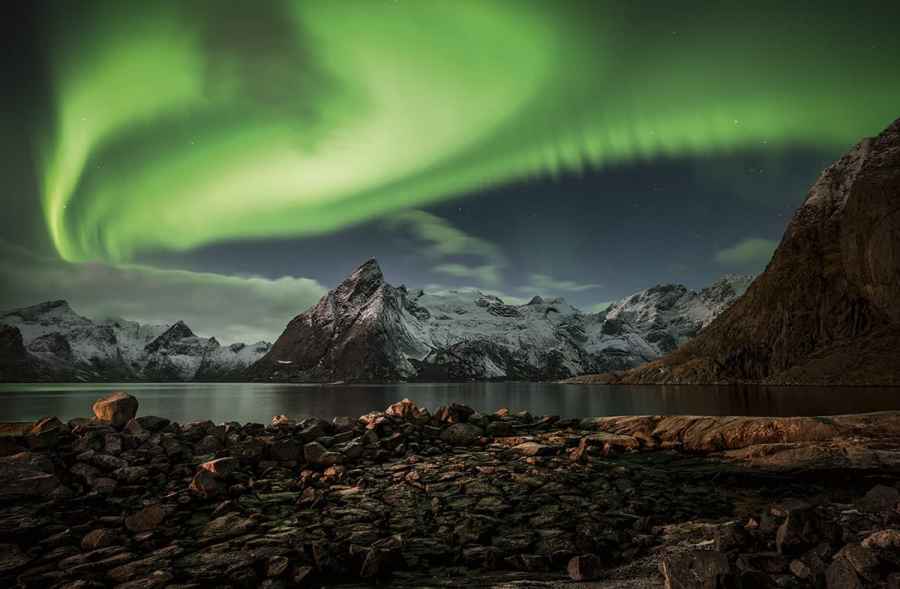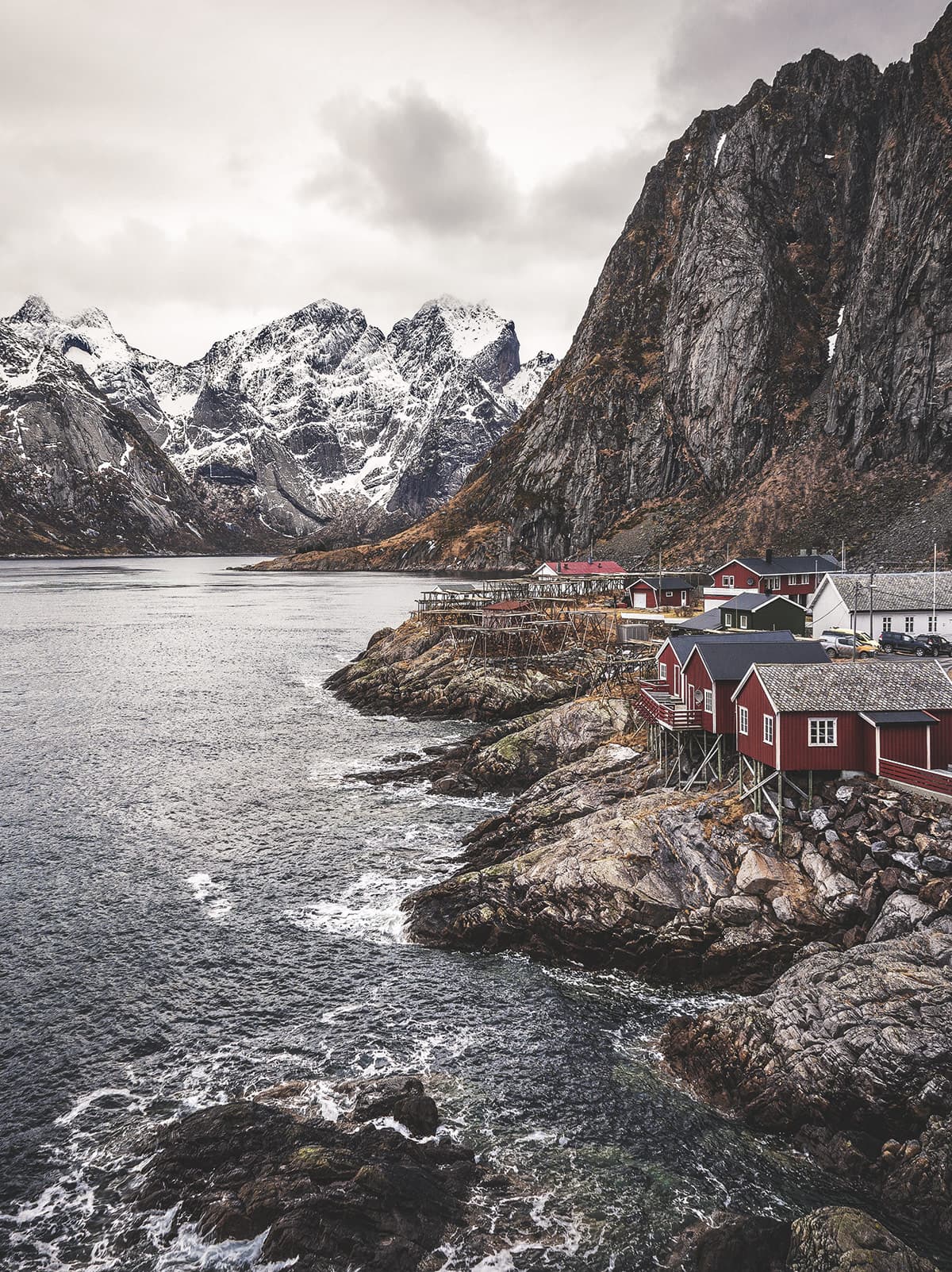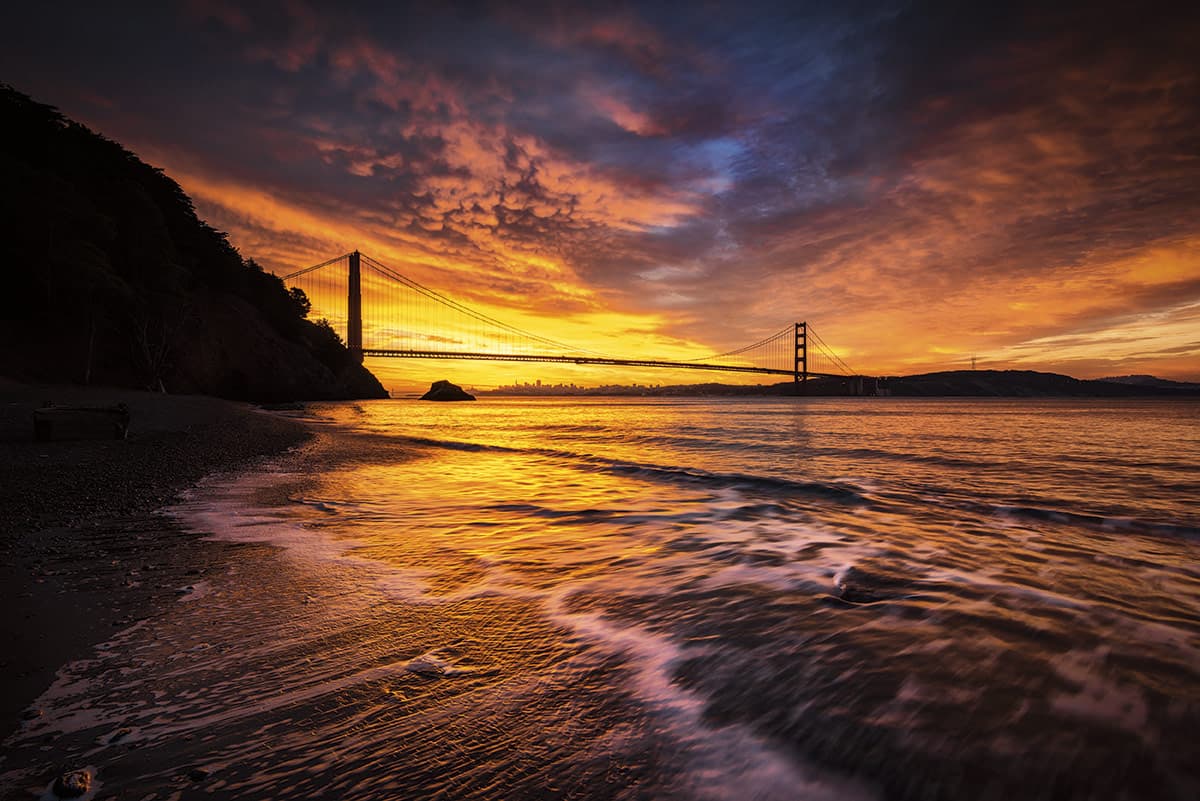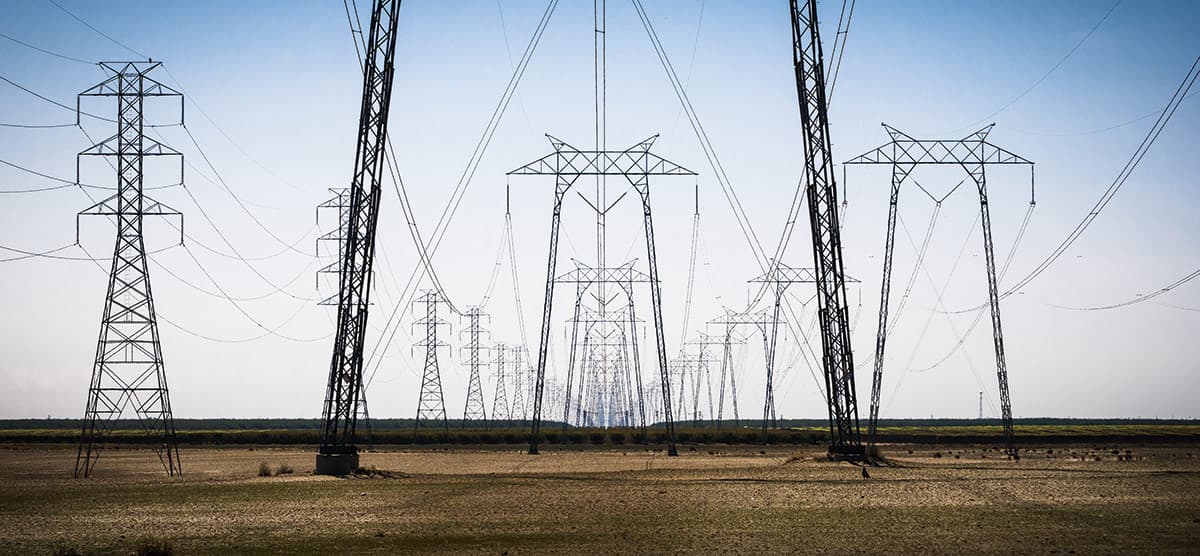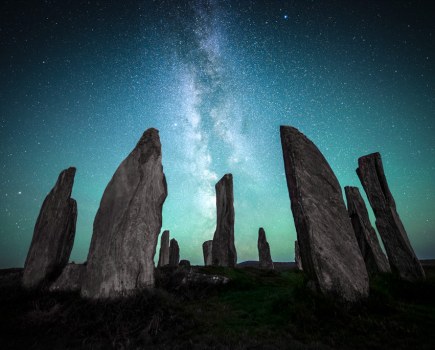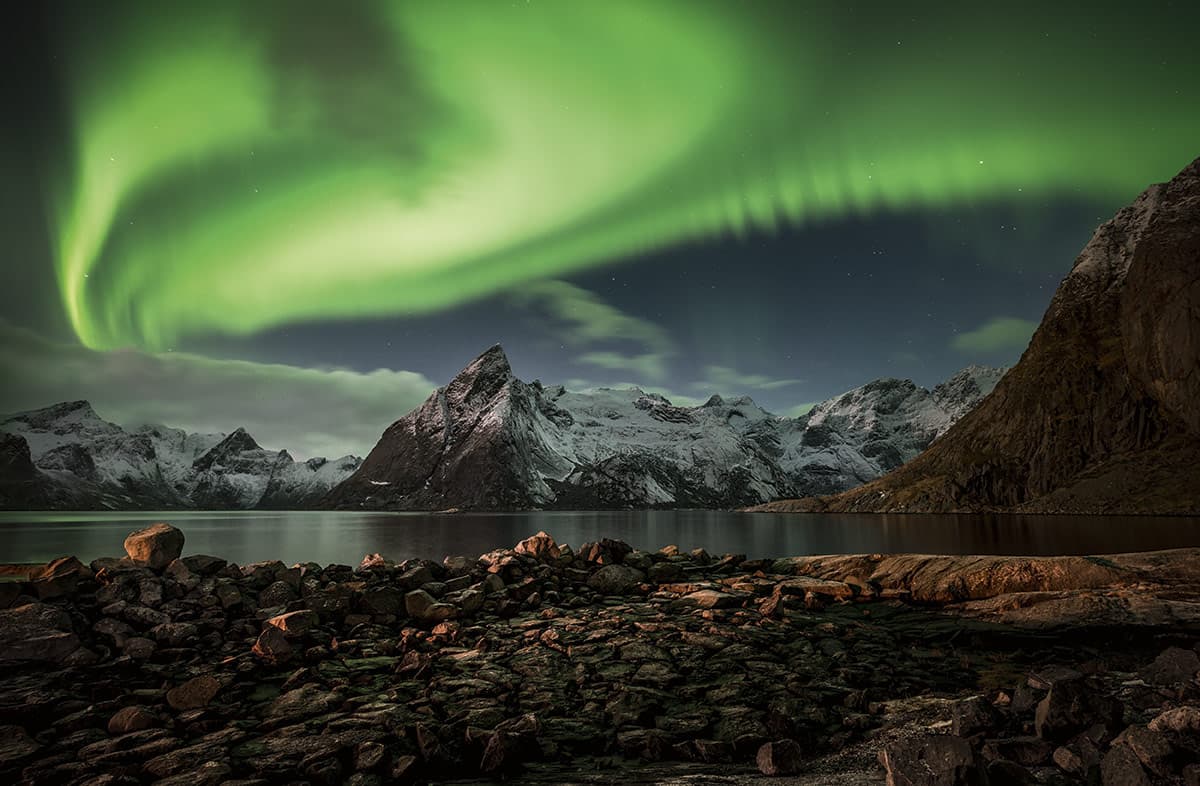
All images by Lorenzo Montezemolo. Swirl, Hamnøy, Norway. Nikon D800, 14-24mm, 30secs at f/5.6, ISO 400
Lorenzo Montezemolo’s keen eye for beautiful horizons around the world has captured the attention of users of photo-upload sites such as Flickr and 500px. We spoke to the American photographer to find out what inspires and motivates him, his future plans and how he gets such sharp images.
Born in Italy, Lorenzo moved to San Francisco in the USA when he was nine years old and has lived there for more than 30 years. He’s been shooting photographs for around the same length of time, but he began to take it more seriously about three years ago. Interestingly, he cites the Google+ social network as a catalyst for deeper involvement in his hobby.
‘I had been posting photos to Flickr since 2007,’ Lorenzo explains. ‘Then, in mid-2011, Google unveiled Google+ and it seemed every photographer out there – including me – flocked to it. Google+ started sponsoring photo walks around the world, and with Google HQ nearby, photo walks were happening around me all the time.
‘Through the photo walks I started meeting, shooting with and learning from some very talented photographers. Although I’m not as active on Google+ as I used to be, I’m very thankful for the learning opportunities, motivation and inspiration it exposed me to.
‘By spending a lot of time shooting with more experienced photographers, I learned a lot about the technical aspects of capturing images while also gaining a lot of inspiration and encouragement.’
Lorenzo’s kit
Currently, Lorenzo shoots with a Nikon D800, but he admits it took him some time to trust digital cameras. ‘I took a break from photography for about ten years,’ he says. ‘I owned a film camera, but I didn’t use it much. I occasionally considered buying a digital camera, but at the time image quality wasn’t very impressive so there was nothing truly compelling about digital.
‘Then, a family friend showed me some photos that he had taken with his Nikon D70 and I was so impressed with the image quality that I decided to buy one myself. The ability to review and reshoot photos instantly was a big selling point for me. The D70 was an impulse buy, but it turned out to be the thing that got me back into photography.’
Lorenzo also has an impressive collection of lenses to accompany his D800, all of which he uses for different aspects of his portfolio. There’s the AF-S Nikkor 16-35mm f/4G ED VR that, along with the AF-S Nikkor 24-70mm f/2.8G ED lens, is his most used optic. Lorenzo uses the wideangle lens with ND grad filters as it readily accepts a filter holder, unlike the AF-S Nikkor 14-24mm f/2.8G ED lens that he uses mainly at night for its better performance in low light.
Lorenzo also uses an AF-S Nikkor 70-200mm f/2.8G ED VR II. ‘Once I got over my instinct to shoot all my landscapes with a wideangle lens, I discovered that sometimes the best parts of a landscape are its details, not its expansiveness,’ he explains. ‘This lens is perfect for getting in close and capturing the smaller scenes we might miss with a wideangle lens.’
Rounding off his collection is an AF-S Nikkor 50mm f/1.4G lens, which Lorenzo says he uses for capturing shots of his adorable niece, photogenic dog and for more creative shots thanks to its very wide aperture.
Keen hobbyist
Lorenzo is keen to keep his photography as a hobby, rather than a profession. ‘It’s a passion,’ he explains, ‘It’s fuel for my love of travel and it’s a great excuse to spend time outdoors. I do make some income from my photography but I prefer to describe it as “a hobby that sometimes pays for itself”.
‘Keeping it as a hobby and a passion rather than a job makes it enjoyable and pressure-free. When I’m not taking photos, I work in IT as a network engineer. Having a day job allows me to pay the bills while also taking time off to travel.’
Fortunately for Lorenzo, he happens to live in one of the most picturesque locations in the world. ‘I live only 45 minutes from the California coast, so I can often leave my office and be at a scenic location in time to catch sunset,’ he says. ‘I love that I’m within driving distance of the ocean and the mountains, and live in a beautiful city. But I also feel very fortunate to be here because the photography community in the San Francisco area is so large, diverse, active and supportive.’ Lorenzo names fellow Californian photographers Toby Harriman, Karen Hutton, Sam Post, Vicki Mar and Barry Blanchard as just some of those he follows and admires.
Images from across the world make up Lorenzo’s impressive collection of shots, and he has some ambitious plans for future photography trips. ‘My favourite places to photograph [so far] have been New Zealand, Norway and my native Italy. I’m hoping to return to each by the end of 2016 to shoot some new locations and to revisit some of my favourite spots from previous trips,’ he explains.
‘My favourite places to travel have always been the ones that capture my imagination and inspire me. For me, photography is a way to preserve those very same feelings of inspiration, wonder and beauty. I would also love to visit Patagonia again and perhaps make the crossing to Antarctica.’
However, at the moment places closer to home motivate Lorenzo. ‘Because I have a lot of travel plans over the next two years, I’m going to be saving up my time off,’ he explains. ‘Summer is monsoon season in California’s Eastern Sierra, so I’ll be spending a long weekend there in July hoping to capture some powerful storms and magical light. I also have some weekend trips planned to Yosemite National Park, Big Sur, the Sonoma Coast and Death Valley.’
Landscape dedication
Landscape photography is popular the world over with a huge number of photographers, but for Lorenzo it holds a special kind of appeal.
‘I enjoy landscape photography because it allows me a creative outlet in an environment I find naturally therapeutic and calming,’ he says. ‘I really like open spaces, and being outdoors is a perfect change of pace and scenery from my day-to-day office and home life. After all, the last thing I’m thinking about when I’m standing on a cliff or knee-deep in ocean water is the work email I need to send.’
Other genres also appeal to Lorenzo. ‘I like cityscapes, macro and long-exposures, to name just a few,’ he says. ‘I also really enjoy night photography, and while I tend to shoot at sunrise and sunset, I think some of my best photographic work has been done between these times.
Unsurprisingly for somebody with such a great love of the outdoors, Lorenzo prefers to spend as little time editing as possible. ‘I do 80% of my editing work in Lightroom, 10% in Photoshop and 10% in other products, such as plug-ins,’ he explains. ‘The truth is that while I have just enough skill to do what I need to do, I’m not a Photoshop whiz. Instead, I try very hard to get my exposure correct in-camera by using graduated ND filters and by always keeping my eye on the camera’s histogram.
‘My typical editing workflow is to import my photos into Lightroom where I make the most of my exposure, contrast, saturation and colour balance adjustments. Once the basic adjustments are done, if I want to give the photo more “pop” I would probably use Nik Software’s Viveza, which has become one of my favourite tools, or I might decide a more targeted approach is better, in which case I might use adjustment layers and luminosity masks in Photoshop. My last step is always to bring the photo back into Lightroom for any final tweaks, like cropping or vignetting.’
Lorenzo says that if he is trying out a new technique or style, he will often let the photo sit for a few days before revisiting it to see whether or not he still likes it – which is a great tip for anybody experimenting with different editing processes.
Lorenzo’s Top Tips for Sharp images
We were particularly interested to know how Lorenzo achieves the incredible sharpness in his landscape shots. ‘I do very little sharpening in post-processing,’ he says. ‘What I do is typically restricted to small Sharpening and Clarity slider adjustments in Lightroom or Structure slider adjustments in Viveza. Going overboard with sharpening can turn an image “crunchy” very quickly, so I try to get images as sharp as possible in-camera.’ Here he reveals some top tips to achieve
the look.
Tripod
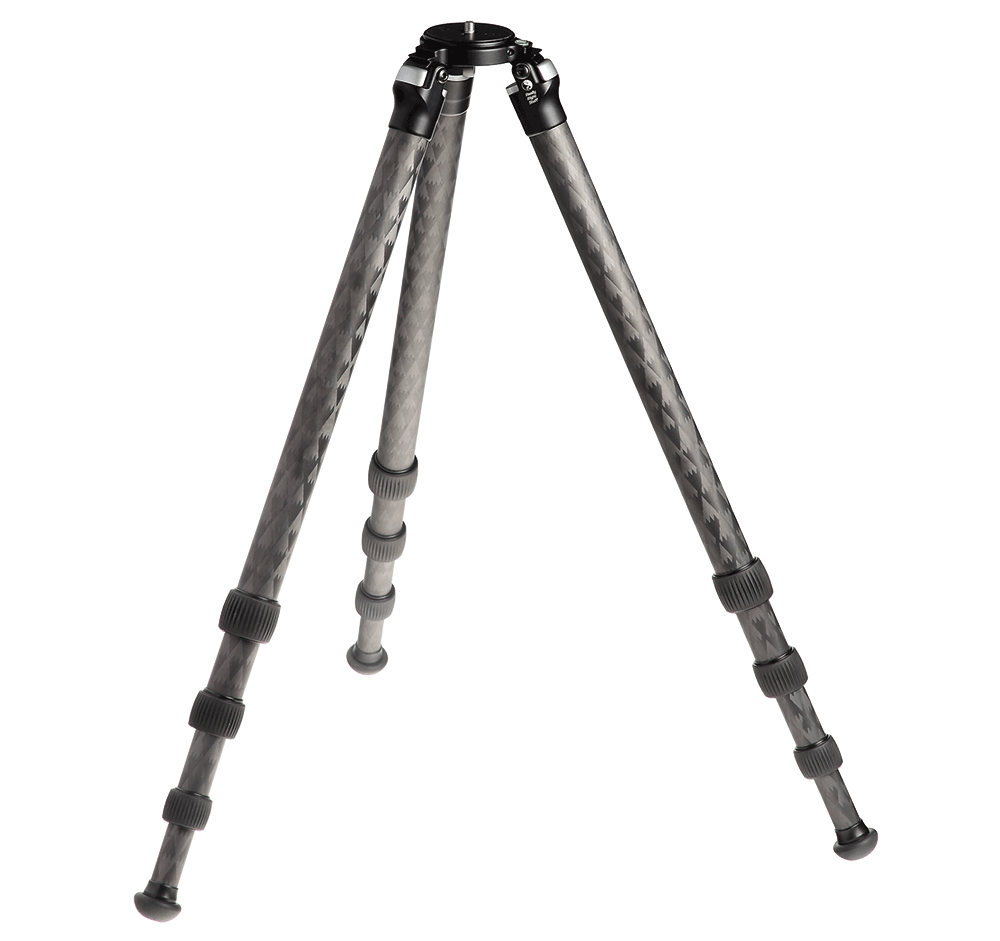 ‘A tripod is one of the most critical but sometimes overlooked pieces in the sharpness puzzle. Two years ago I made the switch from an aluminium tripod to a Really Right Stuff TVC-34L carbon-fibre model (pictured above) and I’ve never looked back. It’s incredibly stable and vibration-resistant, which is critical when shooting in windy conditions. Also, it can be adjusted to almost any height and position.
‘A tripod is one of the most critical but sometimes overlooked pieces in the sharpness puzzle. Two years ago I made the switch from an aluminium tripod to a Really Right Stuff TVC-34L carbon-fibre model (pictured above) and I’ve never looked back. It’s incredibly stable and vibration-resistant, which is critical when shooting in windy conditions. Also, it can be adjusted to almost any height and position.
Aperture
‘I shoot most of my landscapes between f/8 and f/11. Using smaller apertures such as f/16-f/22 to increase depth of
field may seem appealing, but it comes at a cost – loss of sharpness.
Focus point
‘I choose a focus point about one-third of the way up from the bottom edge of the frame. This is a fairly unscientific technique, but it works for most of my photos. Once I lock in my focus point, I check the rest of the frame for
sharpness, using the zoom feature in my live view display.
Mirror up/exposure-delay mode
‘I use the exposure-delay mode on my D800 to lock up the mirror for a few seconds before the shutter opens. This allows any vibration caused by pushing the shutter release button or from the mirror’s movement to fully dissipate before the photo is captured.
Remote shutter release
‘In cases where exposure-delay mode isn’t practical, I use a remote shutter release to capture my photos without having to touch my camera’s controls.
Home-made beanbag
‘If I’m shooting a long exposure in a windy spot, I often drape a homemade beanbag (an old sock filled with dried chickpeas) over my lens barrel. This has the effect of dampening wind vibration.’

